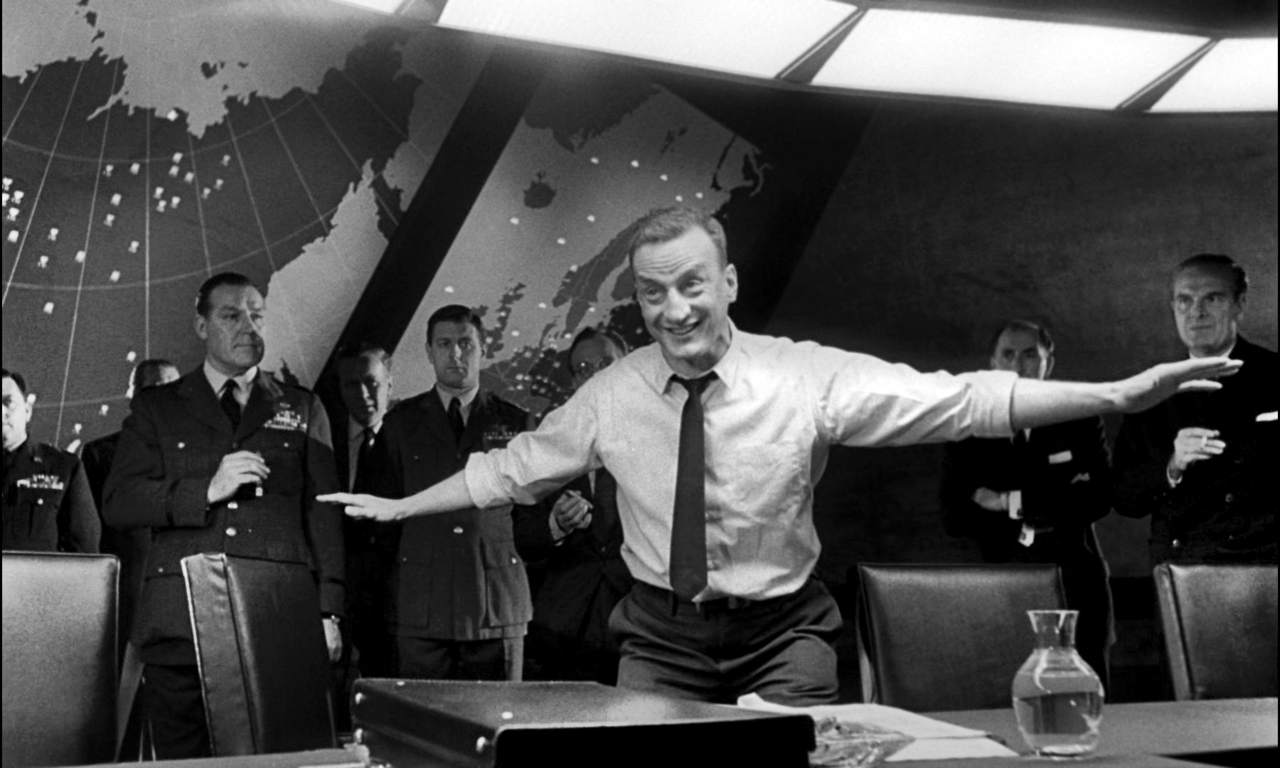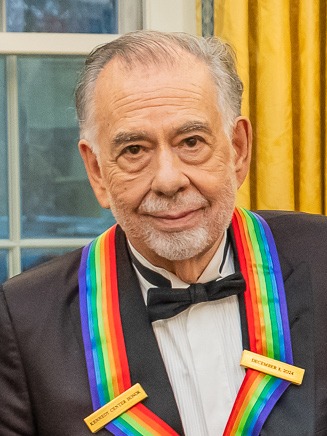New Hollywood Visionaries: Iconic Directors of the 1960s

In the 1960s, you'll find a revolutionary shift in American cinema as bold new directors broke free from studio control. Filmmakers like Scorsese, Coppola, and Altman brought fresh perspectives through personal, director-driven films that captured the counterculture spirit. They pioneered innovative techniques like overlapping dialogue, gritty narratives, and unconventional montage sequences. Their pioneering approaches to storytelling and technical innovation reshaped Hollywood forever, opening doors to a fascinating era of creative liberation.
Image: Harald Krichel creator QS:P170,Q640, Martin Scorsese-68749, CC BY-SA 4.0
The Rise of American New Wave Cinema
While the traditional Hollywood studio system began to crumble in the 1960s, a bold new generation of American filmmakers emerged to reshape cinema forever. You'll find that these Directors, including Francis Ford Coppola, Martin Scorsese, and Robert Altman, brought fresh perspectives and innovative storytelling techniques to the screen.
The New Hollywood movement marked a dramatic shift in American film culture. These visionary creators weren't afraid to challenge conventions, blending genres and tackling complex social issues that struck a chord with evolving audiences. Their success proved that personal, director-driven Films could captivate viewers while pushing creative boundaries.
From The Godfather to Taxi Driver, New Hollywood films established a distinctive cinematic language that would influence generations to come. This revolutionary period in cinema history transformed how we experience movies, creating a lasting legacy that continues to inspire filmmakers today. Coppola's mastery of the craft earned him 14 Academy Awards throughout his illustrious career, cementing his place among cinema's greatest auteurs.
Breaking Away From Studio Control

As the once-mighty Hollywood studio system began to crumble in the late 1940s, several key factors accelerated its decline. First, the Paramount Case stripped studios of their theater chains, while television's rise made them desperate to compete with new technologies and spectacle.
The last vestiges of old Hollywood control fell as Directors of The New Wave crafted films like "Dr. Strangelove or: How I Learned to Stop Worrying" that connected with disaffected youth. Studios, facing dwindling audiences and financial strain, took chances on fresh talent who directed edgier content. The breakdown of the Hays Code further liberated these filmmakers, allowing them to examine themes that spoke to a more sophisticated, college-educated audience.
This marked a stark departure from the era when vertical integration strategies allowed major studios to control every aspect of filmmaking, from production to exhibition.
You'll find that by the mid-1960s, these pressures had created an opening for the "movie brats" - young directors who learned their craft in film schools rather than studio lots.
Innovative Storytelling Techniques
The creative liberation from studio control sparked a revolutionary shift in filmmaking techniques during the 1960s. You'll find visionaries like Altman, Coppola, and Scorsese leading the charge with innovative narrative structures that transformed storytelling. They became experts in the art of overlapping dialogue and multi-character storylines while experimenting with non-linear editing techniques.
Films like Bonnie and Clyde redefined cinema by blending dark humor with graphic violence, turning criminals into captivating antiheroes. The breakdown of the Hays Code opened doors for directors to challenge your expectations and blur traditional genre lines. You'll notice how films like The Wild Angels introduced gritty, hard-edged narratives that stood in stark contrast to Hollywood's polished past.
These innovative approaches created a new cinematic language that would influence generations of filmmakers to come. This creative freedom marked a sharp departure from the vertical integration model that major studios had used to control every aspect of filmmaking in the 1930s.
Cultural Impact and Social Commentary
Rebellious filmmakers of the 1960s shifted cinema into a powerful platform for social commentary, wielding their cameras to expose America's raw underbelly. You'll find directors like Francis Ford Coppola, Martin Scorsese, and Robert Altman boldly tackling controversial topics that mainstream Hollywood wouldn't touch.
Films like Bonnie and Clyde and Easy Rider captured the spirit of youth counterculture, while The Godfather and Taxi Driver dove deep into moral ambiguity and societal corruption.
They challenged censorship restrictions head-on.
They portrayed violence and sexuality with unflinching realism.
They legitimized cinema as a serious artistic medium.
They connected with educated young audiences seeking authenticity.
Their fearless approach to taboo subjects forever changed how movies could address pressing social issues, establishing film as a respected form of cultural critique.
Experimental Filmmaking Approaches

Breaking from Hollywood's established conventions, innovative directors of the 1960s revolutionized not just what stories they told, but how they told them. These experimental approaches redefined filmmaking through bold techniques you'd never seen before.
You'll find Robert Altman's expertise of overlapping dialogue in his ensemble pieces, creating a naturalistic chaos that mirrors real-life conversations. Francis Ford Coppola's unconventional montage sequences challenged traditional narrative structures, while Martin Scorsese's character-driven storytelling used versatile camerawork and pioneering soundtracks to pull you deep into his protagonists' minds.
Even George Lucas, while working within more conventional frameworks, pushed technical boundaries with cutting-edge visual effects.
Through non-linear storytelling and improvisation, these directors crafted a new cinematic language that would influence generations of filmmakers to come.
Key Films That Defined an Era
Five pioneering films emerged during this revolutionary period that would forever transform cinema's terrain. As Hollywood studios grappled with changing audience tastes, a new generation of Best Directors revolutionized American cinema through socially relevant storytelling.
From Bonnie and Clyde's rebellious spirit to Star Wars' groundbreaking effects, these films redefined what Hollywood movies could achieve.
Key innovations that shaped the film industry:
- Arthur Penn's raw portrayal of youth alienation in Bonnie and Clyde challenged traditional Art Cinema
- William Friedkin's documentary-style approach in The French Connection brought unprecedented realism
- Coppola's masterful direction in The Godfather for Paramount Pictures elevated the crime genre
- Scorsese's psychological depth in Taxi Driver and Lucas's mythological narrative in Star Wars showcased American film's diverse potential
Visual Style and Technical Innovations
During the 1960s, revolutionary directors altered cinema through bold technical experiments and distinctive visual styles that would influence generations of filmmakers. You'll find Kubrick's legacy of solid innovation in every frame, particularly in Space Odyssey, where he pushed the Motion Picture Association's boundaries regarding the content of films.
The dark side to the humanist approach emerged in the demands made upon actors, as seen in the last sequence of the era's groundbreaking works. The critical and commercial success of directors like Coppola and Scorsese stemmed from their command of montage and striking cinematography. While Altman revolutionized sound with overlapping dialogue, Lucas transformed visual effects forever. Seen by one critic as a turning point, Bergman's collaboration with Brian Aldiss demonstrated how precise composition could elevate cinema to fine art.
The Role of Independent Production
The creative liberties enjoyed by 1960s directors were largely made possible by the collapse of Hollywood's traditional studio system. As the Hays Code crumbled and a new ratings system emerged, you'll find that independent production became the driving force behind an exciting American film movement.
Roger Corman's low-budget successes inspired a generation of filmmakers to break free from old Hollywood constraints.
- It enabled directors to investigate themes influenced by European art films
- It created opportunities for experimental storytelling, as seen in Bonnie and Clyde's commercial success
- It allowed filmmakers to maintain creative control through companies like American Zoetrope
- It nurtured a more authentic approach to depicting social issues and cultural change
This shift from studio control to independent production permanently changed how American films were made and distributed.
Artistic Freedom and Creative Expression
Breaking free from Hollywood's rigid formulas, directors in the 1960s revolutionized American cinema through bold artistic choices and unparalleled creative freedom. The American New movement empowered visionary filmmakers to craft boundary-pushing narratives that reflected the era's social upheaval.
The dismantling of the Hays Code opened doors for more explicit content, allowing filmmakers to discover previously taboo subjects in their creative expression. This newfound artistic freedom transformed everything from horror films to crime dramas, as director-driven projects gained momentum. The success of innovative films like Bonnie and Clyde and The Graduate proved that audiences were ready for more sophisticated, provocative storytelling.
You'll find that directors like Altman, Coppola, and Scorsese investigated experimental techniques and character-driven storytelling, creating thematically complex works that challenged audiences.




